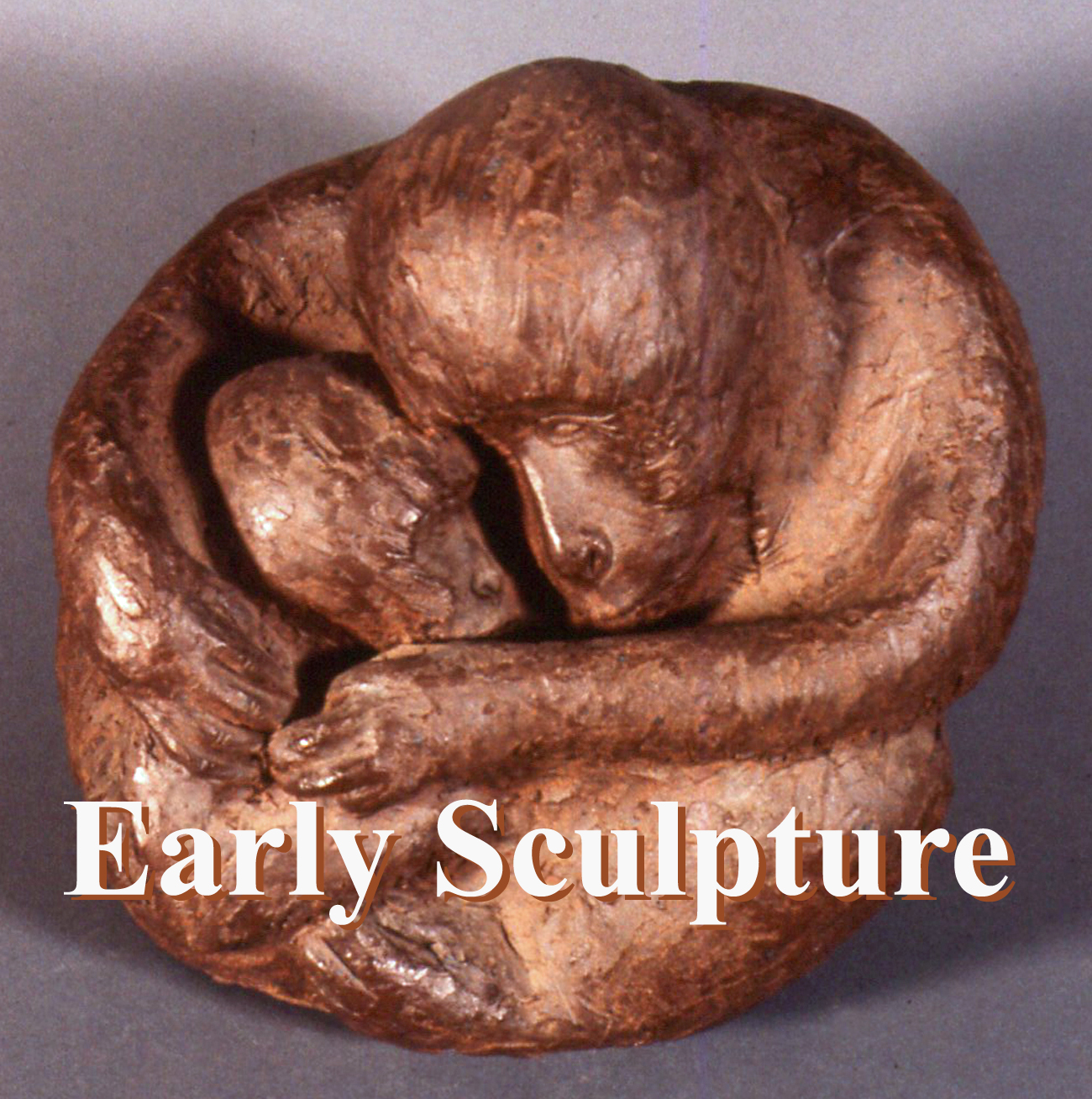Before I learned to use clay properly, I made a small solid clay figure. Thinking it needed an armature, I formed it around some coat hanger wire, but, of course, as the clay shrank around the wire, it cracked.
When at last I learned to properly use clay and to throw on the wheel, I began to make various sculptural shapes from thrown pieces and join them together, as with the eye, horse and coil, and later triffid. Even Madonna was thrown first and altered.
Another sculptural technique was cutting solid slabs of clay into shapes and joining them together in various ways, as with palace and castle.
Wishing to build larger pieces, to overcome clay’s lack of tensile strength, I tried sandwiching nylon mesh (crinoline material) between two thin slabs of clay. The conductor, cosmic snail, torso and easter head were made using this method.
Around 1981, I acquired an extruder, which allowed me to make long, hollow tubes of clay, the shapes and sizes of which depended on dies that I carved into flat steel circles. Two examples of pieces made from extruded clay are tube assemblage and bridges, all pictured below.


